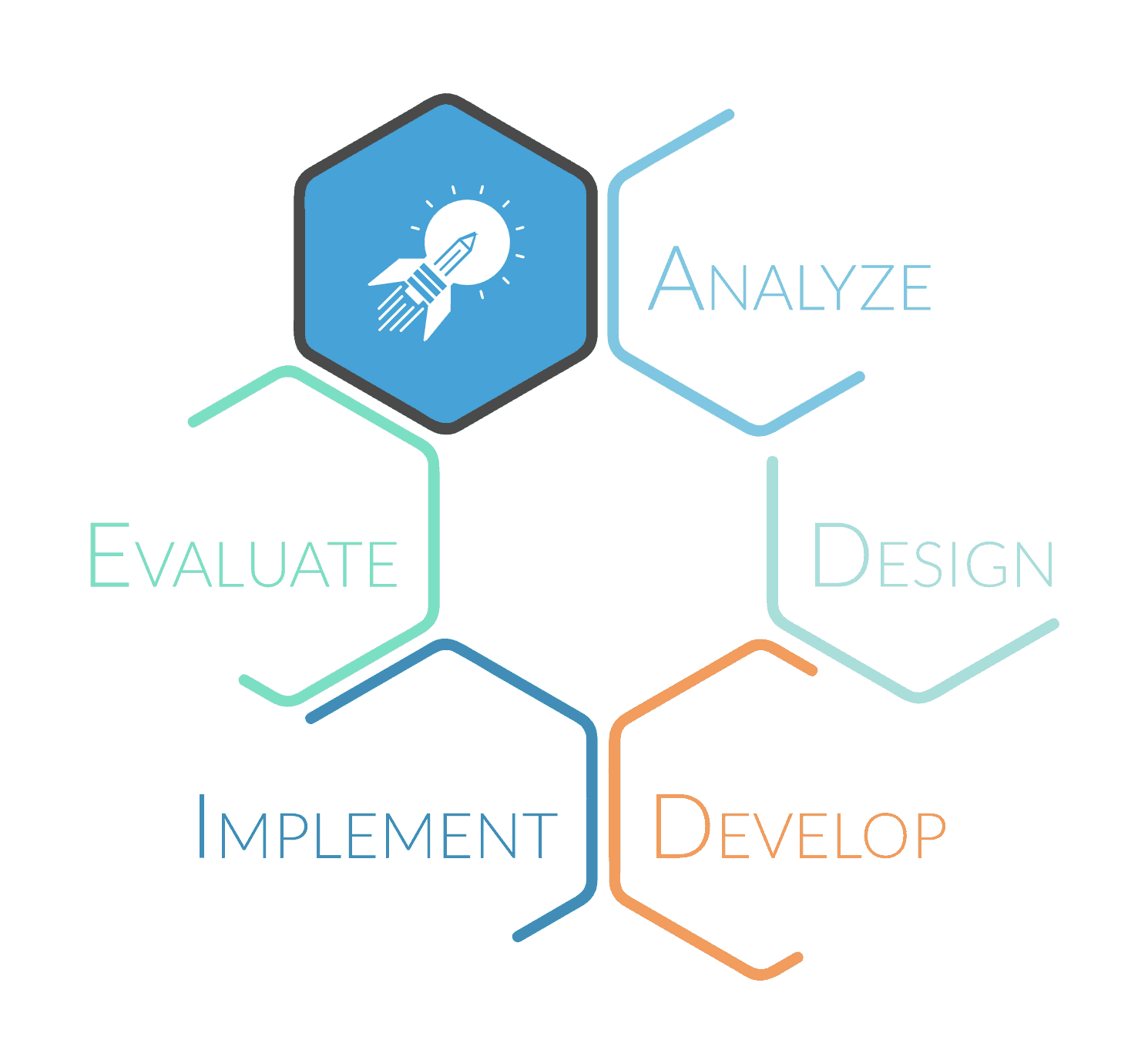Harmonizing with Microcredentials: 7 Steps to Reimagining Your School’s Professional Learning

Over the past four stories, we’ve taken a look at how Harmony Public Schools, an extraordinarily innovative and hardworking group of educators, have fortified their teaching staff with a concentrated focus upon career advancement. Their commitment to awarding microcredentials aligned to career pathways is more than an act of good faith; it’s an investment in what makes Harmony so valuable to their entire learning community of nearly 100,000 staff, students, parents, and collaborators spread across Texas.
We’ve heard the voices representing these roles and have seen how the program has been well-received by the teachers participating and even the students on the receiving end of their action research projects. In short, the commitment to building these pathways and offering incentives to teachers to sharpen their skills has made Harmony stronger and more effective in delivering high quality learning experiences for their learners.
So, what if you would like to follow their lead in developing a new approach to professional learning for your educators? There are seven steps Harmony’s leadership has taken to make this shift.
1. Defining vision for a human capital investment plan
Any project of this scale requires a plan replete with a thoroughly engineered approach to defining the scope. What problems are being solved? And what deficiencies and inefficiencies would be eliminated? Harmony took their success from their prior grant-funded STEM program and thought out the long-term vision over a five-year plan for improvement laid out by their CEO, Fatih Ay. This document, informed by conversations representing all stakeholders, was the source for developing the microcredential program and clarified the project. The conversations include:
- Evaluating the current state: They have learned at Harmony the current state often has some of the necessary pieces but working in silos and this needs to be addressed so they align on one another and work as gears propelling us forward.
- Setting the vision for the future state: They knew they wanted to improve practice in each classroom. They also wanted to drastically improve retention of talent as teachers and administrators progress in their own career journeys.
- Mapping out a plan to get there: Researching the means to accomplish what they want to deliver in teaching and learning was done so they could devise individualized pathways for their staff to prepare for those shared goals.
2. Choosing a microcredential system
Assessing elements that were already in place, the project team conducted a gap analysis for their processes and the needed system investment to operate it in a satisfactory way. For Harmony that meant partnering with BloomBoard to build the career pathways options and the modules that would constitute mastery to an end where promoting a Harmony staffer to a new leadership role would be a decision they could feel confident about. With the outcome and system pieces defined, the project team set about designing the program.
Each organization is unique with their own priorities and needs. It might be hard to find an off-the-shelf system where you can plug in all microcredentials into your career pathways. So start with your own organization looking at roles and job descriptions, define what excellence/success should look like for each role and then build out essential competencies and micro-credentials. One may find some ready to go microcredentials you can just take and plug into your system but it is likely that you’ll have to build some of your own desired competencies so the process looks more organic and appealing to your educators.
3. Building consensus & support
Harmony has a culture where taking on big projects is more the norm than the exception. Harmony curriculum director and grant facilitator, Robert Thornton said, “We make big launches, which is risky, but we listen to feedback and are quick to adapt to challenges with extra support, different expectations, or more clarity as needed.”
To support this culture of taking calculated risks on initiatives that will affect all in the extended Harmony network, leaders have worked hard to implement what they hear from the field. Burak Yilmaz, Harmony’s Director of Instruction said they prioritize, “…ongoing efforts to collect feedback and input, and when educators see that their input is making a difference, it impacts the consensus building positively. They are more open and positive to engagement.”
Asking more of the staff is always a sensitive topic for leaders. However at Harmony, they’ve built a culture of supporting teachers with efficient changes in direction and the microcredential and career pathways initiative was no different. Even so, such a program would only be successful if their teachers and administrators saw that this was a very realistic and approachable way to invest in themselves and their practice. Yilmaz expanded upon this saying, “As we get more input and consequently build more support systems to address educator needs, this is seen as an investment into their professional learning.”
4. Funding the program
Harmony has an excellent track record of winning grants for funding their initiatives. Without grant funding it might be more challenging to start such a journey, but looking at how much districts spend on professional development (PD) with little to no return, you realize it is worth the investment because ultimately the microcredentialing approach is more cost effective than the traditional PD costs. So with careful and strategic budget planning another school or district can use other funding sources (such as state funds like the Texas Education Agency affords schools here) and still make a difference converting long-term planning and spending into a similar investment in teachers and principals.
5. Implementing the project plan
With a funded plan and all stakeholders current with the timeline, Harmony’s central leadership brought in their school-level leaders across their entire network of schools. Sharing the project plan and delegating messaging responsibilities helped principals socialize the project as well as identify early hand-raisers from each building’s teaching staff. These “mavens” served as front-running examples for their peers, earning the first microcredentials and seeing how the strategy accounted for competencies they had already mastered. This accelerated the adoption by way of testimonials shared among peers.
By increasing support systems tailored to educator needs and challenges, implementation scale also increases and we get better success. Harmony’s “Share and Shine” method which was also highlighted in the previous Learner-Centered STEM series. For any new initiative, our approach is to share early successes in abundance and let those early champions shine under the spotlight. This approach provides acknowledgement and appreciation of our early adopters and motivates them to go further and deeper. It also gives critics and nay-sayers real insider examples of how this can be done successfully and turns them into advocates as well. “Share and Shine” builds optimism and expands our pool of early champions.
6. Change management
Like many schools, the culture of Harmony is one of high expectations for students and staff alike. Those high expectations apply consistently to supporting staff in the same manner staff would support those students. This means no teacher is left to fend for themselves. The program may be voluntary, but that’s to promote and recognize the agency of each educator to advance their own career by targeting mutually agreed upon skills to master. When things don’t go as planned, or a career pathway hits a snag while a staffer is attempting a module, leaders figure out who is struggling and why in order to intervene in a way in which the participant and the program are both tended to in a timely manner.
Harmony’s leaders have found over the years that when it comes to supporting teachers with their microcredentials, peer support is more valuable and effective. That is another testimony to Harmony’s teacher-led professional learning focus. Therefore, they have added a new support role for career pathways: Microcredential Ambassadors. These are teacher leaders who have already earned a bunch of microcredentials and are tasked with providing individual or group support to other teachers on their campuses to make their microcredentials experience more positive and help them cross the finish line.
7. Continued operation of project
When Harmony’s leaders approach a new initiative, they do so intentionally building upon existing work to fill gaps and revive the efficacy of those prior projects. When there’s a sizable overlap in these initiatives, they merge or collapse the projects to reduce overhead and burden on all resources. Therefore, as the microcredential program augmented their prior work establishing professional learning communities, that extended their professional learning work to shift to a project-based learning model. Undergirding all of these is their universal mission of creating a personalized learning experience for both teachers and students alike.
As microcredentials become a more integral part of Harmony’s professional learning culture, leaders see potential for other professional learning that can be augmented with microcredentials such as coaching, mentoring, SLOs, and even more traditional PD sessions. Harmony’s instructional leaders have learned how to align a PD session with a microcredential to give participants a more hands-on PD experience where they get to analyze their current reality, design and develop a plan or a solution to a problem, and as soon as they they leave that PD session, implement that plan in their classroom and then reflect, evaluating their practice, using the ADDIE design framework embedded into professional learning cycles.

This approach helps teachers complete half of their microcredential requirements within a PD session and complete the remainder when they return to the classroom armed with a plan of action.
Harmony continues to refine their enterprise resource planning and strategic investment in their talent, promoting from within and increasing the value of the learning experience for thousands of teachers and learners across the state of Texas.
Additional Resources
For more, see:
- Change Management at Harmony Public Schools: When Prior Innovations Become Status Quo
- Harmony’s Commitment to Microcredentials: A Close Look at their Professional Learning Experience
- Meet the Culture Hackers: Microcredentials Aren’t Just for Students
This post is part five of a five blog series in the upcoming “Getting Smart on Competency-Based Career Advancement at Harmony Public Schools” produced in partnership with Harmony Public Schools (@HarmonyEdu).
Stay in-the-know with innovations in learning by signing up for the weekly Smart Update.





0 Comments
Leave a Comment
Your email address will not be published. All fields are required.